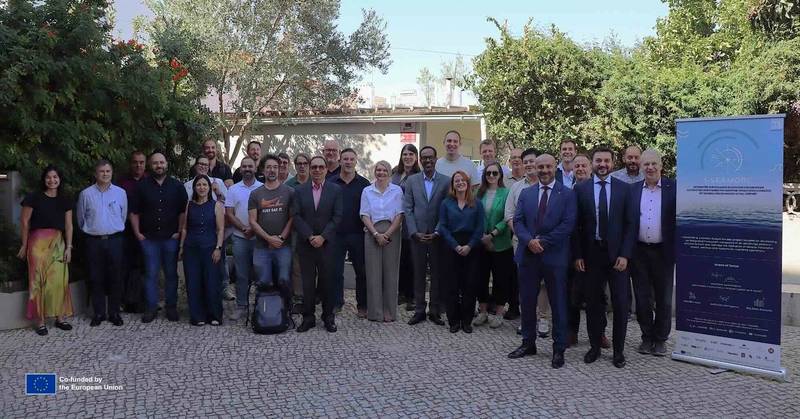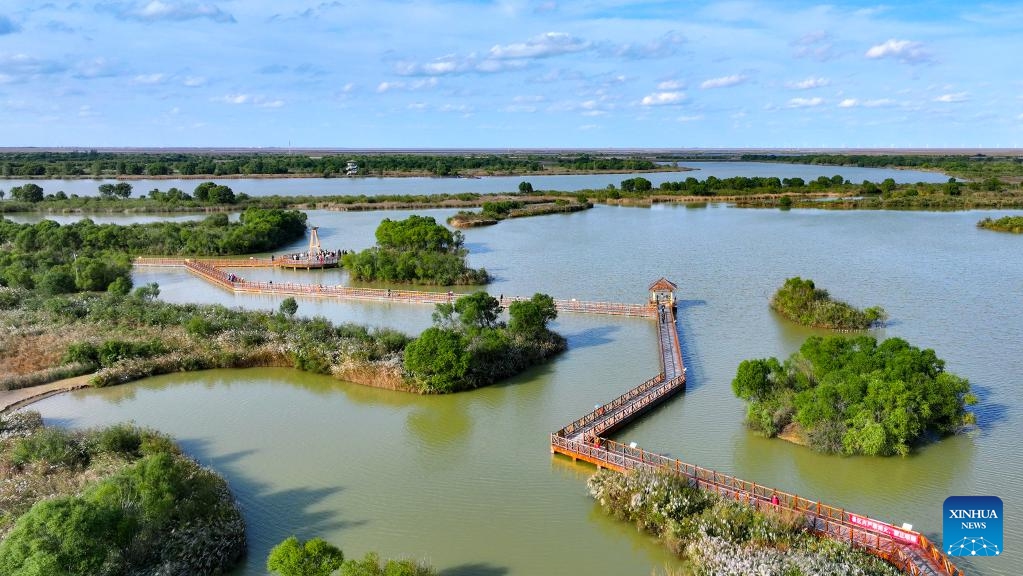I-SEAMORE Project Concludes with a Tested Maritime Surveillance Platform – Marine Technology News

I-SEAMORE Project Final Report: Enhancing Maritime Security in Alignment with Sustainable Development Goals
Project Overview and Contribution to SDG 16 (Peace, Justice, and Strong Institutions)
The I-SEAMORE project, co-funded by the European Union’s Horizon Europe program, has concluded after successfully developing an integrated maritime surveillance platform. The project directly supports Sustainable Development Goal 16 by strengthening the institutional capacity of European Maritime Authorities to combat illicit activities and uphold the rule of law at sea. By providing enhanced situational awareness, the platform is a critical tool for promoting peace and justice within the maritime domain.
- Core Technologies: The platform integrates Artificial Intelligence (AI), Big Data fusion, and multi-asset orchestration of Unmanned Vehicles (UxVs).
- Primary Objective: To equip maritime authorities with advanced capabilities for improved operational readiness and decision-making, thereby building more effective and accountable institutions as targeted by SDG 16.
Operational Demonstration and Impact on Maritime Safety and Security
A final demonstration held in Tróia, Portugal, showcased the platform’s technical and operational readiness. The event validated the system’s effectiveness in addressing critical security threats, which is fundamental to achieving several SDGs.
- Countering Drug Smuggling: The platform demonstrated its ability to detect and track vessels engaged in illicit drug trafficking, a direct contribution to SDG 16 by combating organized crime.
- Addressing Illegal Immigration: The system’s capacity to monitor and manage situations related to illegal immigration supports safe, orderly, and regular migration, while also strengthening border security.
By securing maritime zones from these threats, the I-SEAMORE platform also indirectly supports SDG 14 (Life Below Water) by providing a tool that can be adapted to combat illegal, unreported, and unregulated (IUU) fishing, and SDG 8 (Decent Work and Economic Growth) by ensuring the safety of legal maritime commerce and the blue economy.
Stakeholder Engagement and Partnership for the Goals (SDG 17)
The project’s final event in Setúbal, Portugal, emphasized multi-stakeholder collaboration, a core principle of SDG 17 (Partnerships for the Goals). The conference brought together technology developers, high-level policy officers, and end-users to ensure the project’s outcomes align with real-world operational needs and policy objectives.
- High-Level Input: Presentations from representatives of FRONTEX and HOME.F2 Innovation and Security Research provided crucial policy and operational context.
- End-User Feedback: A dedicated session ensured that the platform’s development was guided by the requirements of the authorities who will use it.
- Market Facilitation: Direct exchanges between technology providers and potential end-users were facilitated to pave the way for future implementation and commercialization.
Commercialization Strategy and Sustainable Innovation (SDG 9)
A White Paper titled “Business Modelling for an Advanced Maritime Surveillance Platform” outlines a sustainable path forward for the I-SEAMORE ecosystem, reflecting the aims of SDG 9 (Industry, Innovation, and Infrastructure). The strategy focuses on translating this research and innovation initiative into a resilient and commercially viable infrastructure solution.
- Sustainable Exploitation Models: The paper details long-term business models, including Direct-to-Government contracts and Data-as-a-Service (DaaS), ensuring the platform’s continued contribution to maritime security.
- Market Analysis: A comprehensive analysis of the total addressable market (TAM), serviceable available market (SAM), and serviceable obtainable market (SOM) has been conducted.
- Ethical and Legal Considerations: The strategy critically addresses ethical, legal, and social aspects (ELSA), ensuring that the platform’s adoption aligns with EU values and legal frameworks, promoting responsible innovation.
Analysis of Sustainable Development Goals in the Article
1. Which SDGs are addressed or connected to the issues highlighted in the article?
- SDG 16: Peace, Justice and Strong Institutions
The article directly connects to this goal by focusing on the development of a maritime surveillance platform designed to help European Maritime Authorities combat illegal activities. The specific use cases mentioned, “drug smuggling and illegal immigration,” are challenges to peace, security, and the rule of law. The I-SEAMORE platform aims to strengthen the operational capacity of national and regional institutions responsible for maintaining maritime security. - SDG 9: Industry, Innovation and Infrastructure
This goal is central to the article, as the I-SEAMORE project is presented as a “research and innovation program” co-funded by the European Union. The project’s core is the development and application of advanced technologies, including “AI, Big Data fusion, and multi-asset orchestration (UxVs).” The article also emphasizes the path from research to market, discussing “access-to-market strategies” and the “future commercialization of the solutions,” which aligns with fostering innovation and upgrading technological capabilities.
2. What specific targets under those SDGs can be identified based on the article’s content?
-
SDG 16: Peace, Justice and Strong Institutions
- Target 16.4: By 2030, significantly reduce illicit financial and arms flows, strengthen the recovery and return of stolen assets and combat all forms of organized crime.
The article’s mention of a use case focused on “drug smuggling” directly relates to combating organized crime and the illicit flow of goods. The platform is designed to provide authorities with the tools to detect and respond to such criminal activities at sea. - Target 16.a: Strengthen relevant national institutions, including through international cooperation, for building capacity at all levels… to prevent violence and combat terrorism and crime.
The I-SEAMORE project is an example of international cooperation (co-funded by the EU) aimed at strengthening the capacity of “European Maritime Authorities.” The platform enhances their “situational awareness and operational readiness,” thereby building their institutional capacity to combat maritime crime.
- Target 16.4: By 2030, significantly reduce illicit financial and arms flows, strengthen the recovery and return of stolen assets and combat all forms of organized crime.
-
SDG 9: Industry, Innovation and Infrastructure
- Target 9.5: Enhance scientific research, upgrade the technological capabilities of industrial sectors in all countries… encouraging innovation and substantially increasing the number of research and development workers… and public and private research and development spending.
The project, funded under the “Horizon Europe research and innovation program,” is a direct embodiment of this target. It focuses on enhancing scientific research and upgrading technology (“AI, Big Data fusion”) for the maritime surveillance sector. The publication of a White Paper on “Business Modelling” and “commercialization strategy” further supports the goal of encouraging innovation and ensuring its practical application and market uptake.
- Target 9.5: Enhance scientific research, upgrade the technological capabilities of industrial sectors in all countries… encouraging innovation and substantially increasing the number of research and development workers… and public and private research and development spending.
3. Are there any indicators mentioned or implied in the article that can be used to measure progress towards the identified targets?
The article does not mention official UN SDG indicators, but it implies several ways to measure progress toward the identified targets:
- Indicator for Target 16.4: The successful operational deployment of the platform to detect and interdict illegal activities. The article mentions the “live demonstration… showcasing the I-SEAMORE platform’s technical and operational readiness” in scenarios like “drug smuggling.” A key performance indicator would be the number of successful detections or interventions enabled by the platform once in use by authorities.
- Indicator for Target 16.a: The rate of adoption of the I-SEAMORE platform or similar technologies by national and European maritime authorities. The article’s focus on “access-to-market strategies,” “Direct-to-Government contracts,” and addressing “market entry barriers” suggests that a primary measure of success is the platform’s uptake and integration into the operations of these institutions.
- Indicator for Target 9.5: The successful commercialization of the developed technology. The creation of a “White Paper” outlining the “commercialization strategy” and “sustainable long-term exploitation models” like “Data-as-a-Service (DaaS)” serves as a tangible output. Progress can be measured by the successful transition of the research project into a commercially viable product or service used by end-users.
SDGs, Targets, and Indicators Table
| SDGs | Targets | Indicators (Implied from the article) |
|---|---|---|
| SDG 16: Peace, Justice and Strong Institutions | Target 16.4: Combat all forms of organized crime. | The platform’s demonstrated capability to generate a real-time picture of maritime activity to counter specific use cases like drug smuggling. |
| SDG 16: Peace, Justice and Strong Institutions | Target 16.a: Strengthen relevant national institutions… to combat… crime. | The planned uptake of the platform by European Maritime Authorities, facilitated by the project’s commercialization strategies (e.g., Direct-to-Government contracts). |
| SDG 9: Industry, Innovation and Infrastructure | Target 9.5: Enhance scientific research, upgrade the technological capabilities… encouraging innovation. | The successful development of an integrated surveillance platform using AI and Big Data, and the publication of a White Paper outlining its business model and market potential. |
Source: marinetechnologynews.com
What is Your Reaction?
 Like
0
Like
0
 Dislike
0
Dislike
0
 Love
0
Love
0
 Funny
0
Funny
0
 Angry
0
Angry
0
 Sad
0
Sad
0
 Wow
0
Wow
0



















































.jpg.webp?itok=0ZsAnae9#)

























